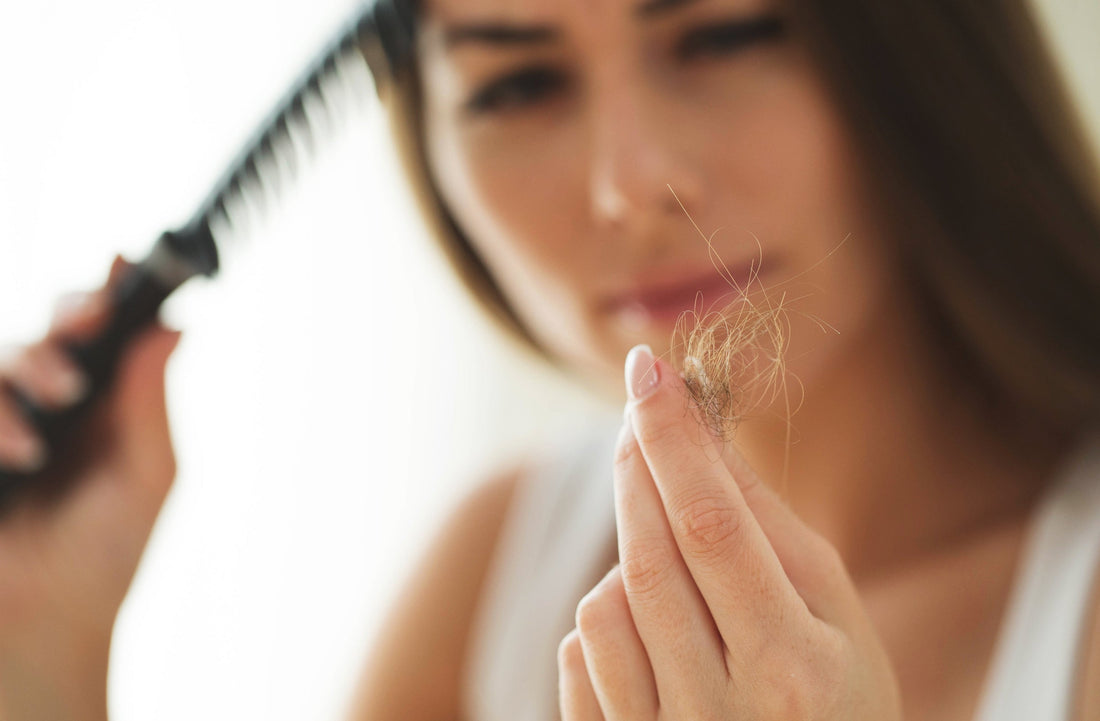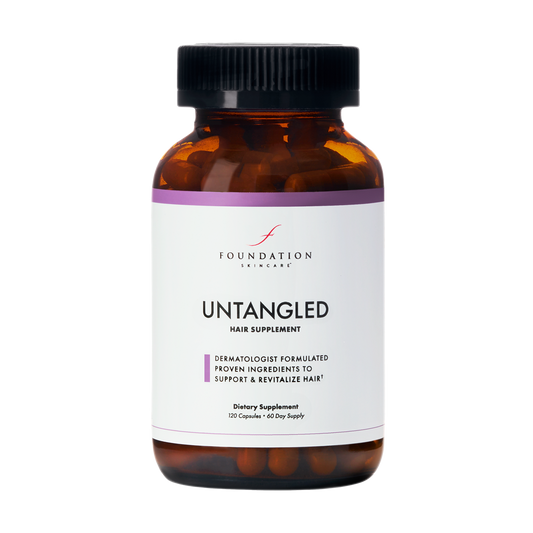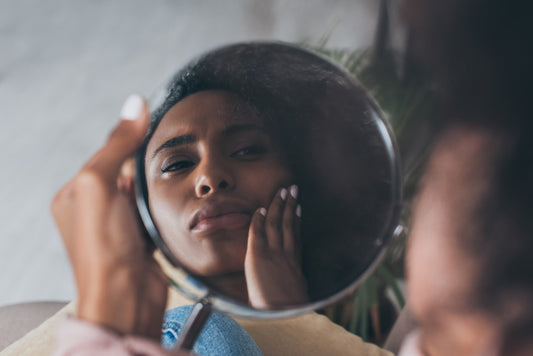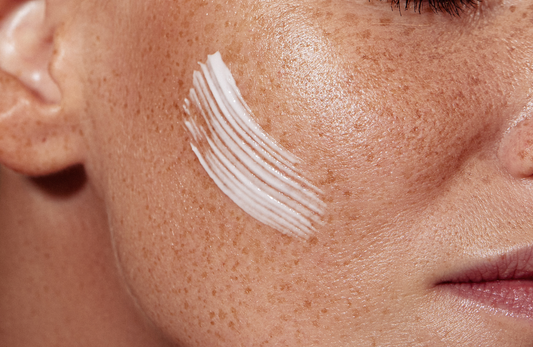If you’ve found quite a few more stray hairs than usual on your pillow, shower floor, or brush after getting ready for the day, you’re far from alone. Most everyone loses some 50-100 hairs per day at a certain point in the hair cycle, and losing significantly more can feel scary.4 For many people, increased hair shedding happens regularly and coincides with certain seasons.
Known as seasonal hair loss, this scenario isn’t linked with serious medical conditions, thankfully. But that doesn’t mean you have to attempt to grin and bear the excessive loss of your locks every year.
Understanding The Hair Cycle
Normal hair growth might seem like a simple process, but it’s actually a cycle that consists of several distinct stages:
- Anagen
- Catagen
- Telegen
- Exogen
It all starts with the anagen phase, when your hair follicles push hairs out that will slowly grow until they’re either cut or reach their natural end and fall out. The longest part of the hair growth cycle, typically lasting 3-5 years, about 90% of the hairs on your head are in the anagen phase at any given time.1,2
Next, your hair goes through the catagen phase, which lasts about 10 days. Also known as the transition stage, this period involves hair follicle shrinkage as your hair growth slows down.
Then your hair gets to rest, during the telogen phase. No growth happens, nor does much falling out, at this point. Finally, your hair reaches the exogen, or shedding, phase. Over the course of 2-5 months, it’s normal and healthy to lose up to 100 hairs per day through this phase.
When Does Seasonal Hair Loss Occur
Seasonal hair loss seems to be linked with changes in sun exposure, so where you live makes a difference in the timing. While the loss can happen during any time of the year, fall into winter is a common hair shedding season in North America.2
Because seasonal hair loss is linked with hormonal shifts, life stages, such as perimenopause, may play a role in the timing, too. Excess hair loss in general may also stem from a high fever, high levels of emotional stress, childbirth, and no longer taking birth control pills.4 So if your hair shedding cycle amps up seasonally, one or more of these factors may exacerbate your symptoms.
UnTangled Hair Supplement
• Reduces shedding & thinning
• Strengthens hair follicles
Why Does Seasonal Hair Loss Happen
While seasonal hair loss isn’t fully understood, symptoms are believed to stem from weather-related changes that impact levels of hormones that contribute to your hair growth versus loss. Less sunlight, for example, alters the way your hypothalamus works. Because this part of the brain produces growth hormones, lower levels may lead to less hair.6
Changes in your nutrition may play a role in seasonal hair loss as well, by boosting the telogen phase then prompting more falling out. So if you go from eating a range of colorful whole foods through the summer to refined comfort foods come fall, you may be more prone to the seasonal shedding.3,7
How Can Weather Affect Hair Health
Beyond hormonal changes from sunlight changes that impact your hair, weather can make or break your hair health – in some cases, literally. High winds and a lack of moisture in the air, for example, can damage your follicles, leading to dry, brittle, and discolored hair that snaps easily.8 Humidity, too, can impact your hair, making way for an oily scalp, frizziness, and flatness.
If you don’t take good care of your hair with positive hygiene habits and quality products during weather changes that affect your hair, these effects may be exponential.
Ways to Help Protect Your Hair Inside & Out
While there’s no sure way to completely stave off seasonal hair loss, you can take steps to improve the health of your hair for greater strength, shine, and longevity. For starters, experts recommend getting a trim every 4-8 weeks to guard against excessive hair loss. Meanwhile, use the lowest heat setting on your blow dryer or, better yet, allow your hair to air dry most often. Keeping your natural hair color or choosing a dye within 3 natural shades can protect your hair, too.9
Quality products and supplements may help protect your hair from the inside out as well. Foundation Skincare offers products designed by clinical experts for radiant, healthy hair you can feel confident about. Our Hair Serum, typically applied to your scalp twice a day, promotes hair growth without minoxidil, an irritant commonly found in hair growth products. Our UnTangled Hair Growth Supplement stimulates hair growth using a proprietary blend of vitamins, minerals, herbs, and acids. (You can also purchase both products as a bundle, in the UnTangled Essentials Kit.)
Nutrition Tips for Seasonal Hair Loss
A range of essential nutrients play an important role in hair health, so aim to eat a balanced, nutritious diet all year long. Nutrients especially helpful for your hair include omega-3 fatty acids, prevalent in oily fish and flaxseeds, vitamin B-6, found in rich supply in bananas, potatoes, and spinach, and vitamin B-12, found primarily in meat and dairy products.10Minerals, such as iron, selenium, and zinc, play an important role, too. Valuable sources include whole grains, nuts, seeds, and legumes, like beans and lentils.
In fact, a deficiency of most any nutrient can lead to dull or brittle hair. This is especially likely if you undergo sudden or extreme weight loss, eat a restrictive diet, have limited access to healthy food, or live with a chronic condition that affects nutrient absorption, like Crohn's disease.11
Given that meeting your dietary needs through food alone isn’t a breeze or feasible for many people, dietary supplements can help fill in the gaps and prevent deficiencies. Our UnTangled Hair Growth Supplement contains a range of micro-nutrients to nourish your hair follicles to help ensure just that.
So does seasonal hair loss grow back? Yes, it’s usually both temporary and reversible. And with smart practices, such as healthy hair hygiene habits and using quality products, you may even be able to prevent, or at least minimize, the effects.
References:
-
https://www.healthline.com/health/stages-of-hair-growth
-
https://www.ncbi.nlm.nih.gov/pmc/articles/PMC5338843
-
https://health.mountsinai.org/blog/seasonal-hair-loss
-
https://www.aad.org/public/diseases/hair-loss/insider/shedding
-
https://www.today.com/shop/seasonal-hair-loss-t274836
-
https://www.ncbi.nlm.nih.gov/pmc/articles/PMC8706217
-
https://www.medicalnewstoday.com/articles/foods-that-cause-hair-loss
-
https://dermatology.ca/public-patients/how-to-keep-fresh-in-the-winter
-
https://www.healthline.com/health/tricks-healthier-fuller-hair/20standard
-
https://www.webmd.com/skin-problems-and-treatments/hair-loss/eat-right-healthy-hair
-
https://www.ncbi.nlm.nih.gov/pmc/articles/PMC5315033/#:~:text=Nutritional%20deficiency





